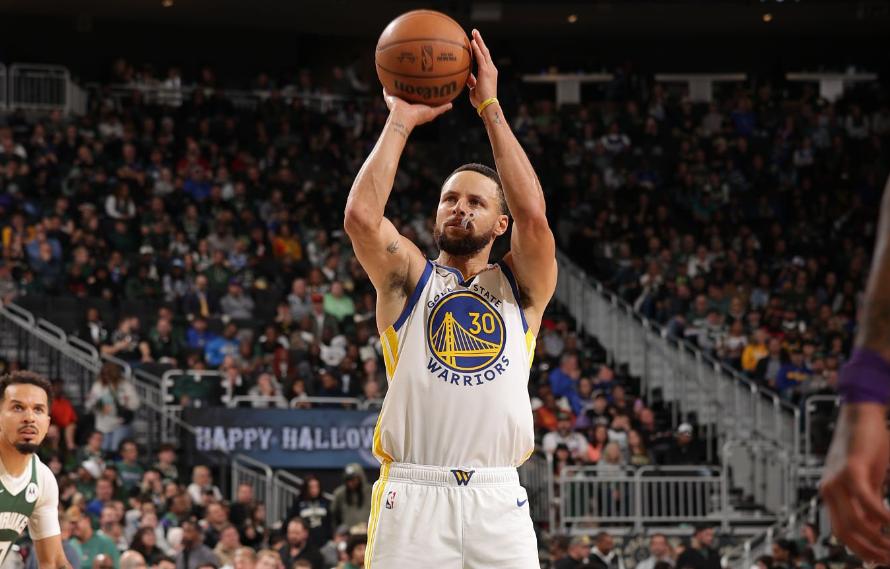Top 10 Data Insights from the Season Start: Wembanyama’s Increased Shots in the Paint, Giannis Poised to Break Shaq’s Record
On November 1, 2025, the 2025-26 season remains in its opening phase, with four teams undefeated and three teams yet to earn their first victory. Despite potential quick shifts, the following 10 data points distinctly reveal crucial trends from the season’s first 10 days. All figures are up to date as of October 31, Beijing time.


1. Average points per team per game reach 117.7
This figure ranks as the third highest in NBA history and is the highest in the last 64 seasons (since 1961-62), driven by a combination of game pace and offensive efficiency.
The league’s average possessions per 48 minutes stand at 101.9; if maintained, this would mark the highest in the past 30 years of detailed statistical tracking, though pace typically slows as the season progresses.

Regarding offensive efficiency, the league scores 114.3 points per 100 possessions, nearing the all-time high of 114.5 points set two seasons ago (over the full season). Notably, during the same period two seasons ago (first 10 days), the league averaged only 110.3 points per 100 possessions, indicating a strong likelihood that the league will set a new offensive efficiency record for the sixth time in the past eight seasons.
2. Average fouls per game at 45.7, a 30-year high
Free throws remain the most efficient scoring method, and this season’s foul count has risen significantly. The 45.7 fouls per game represent the highest in 30 years, a 23% increase from last season’s 37.2 fouls.

This rise is linked not only to stricter enforcement on “jump shot blocking” fouls but also to an increase in foul rate on drives, which has climbed from 7.2% last year to 8.5%, the highest since tracking began 13 years ago.
The Magic (40.6 free throws per 100 shots), Rockets (39.5), and Lakers (38.3) rank first, second, and fifth respectively for free throw rates over the past 20 seasons, if these rates hold.
3. Defenders initiate full-court pressure on 18.2% of possessions in the opponent’s backcourt
The rise in fouls partly stems from increased defensive pressure. NBA teams have widely adopted the Pacers’ successful full-court press strategy from last season, resulting in the highest backcourt pressure rate since tracking began 13 years ago.
This intensified pressure has also led to more turnovers: league turnovers per 100 possessions have risen from 14.3 last year to 15.3 (compared to 14.9 at the same point last season), yet offensive efficiency continues to improve despite this.
The Celtics, Suns, and Cavaliers have moved their defensive starting points forward the most, with 20 out of 30 teams increasing their full-court pressure intensity compared to last season.
4. The 76ers have the lowest shot quality but maintain efficient offense

Although Maxey has started the season scoring hot, tracking data shows the 76ers rank last in shot quality across the league.
Paradoxically, the 76ers rank second in offensive efficiency (124.9 points per 100 possessions) and remain undefeated at 4-0. They also rank in the top ten in the other three offensive factors: sixth in free throw rate, second in turnover rate, and sixth in offensive rebound rate.
The team’s inside shooting percentage is only 54.8% (bottom ten in the league), but their outside shooting percentage is an impressive 41.9% (first in the league), a performance unlikely to be sustained long-term. Moreover, three of their four wins came after overcoming double-digit deficits in the fourth quarter, whereas last season they were 0-46 in such situations.
5. The Heat average just 12.6 seconds per offensive possession
This marks the fastest pace since tracking began 13 years ago, surpassing the previous record holder—the 2018-19 Thunder with 13.1 seconds (the Trail Blazers follow closely this season at 13 seconds).

According to Synergy tracking, 23.4% of the Heat’s possessions are fast breaks (second highest in the league), while they only run 19.1 pick-and-rolls per 100 possessions, about half the rate of other teams and far below the previous record of 37.9 per 100 possessions set by the 2018-19 76ers.
Last season, the Heat’s fast break rate was just 16.5% (sixth lowest in the league), and their pick-and-roll frequency was 69 per 100 possessions (ninth highest). This season’s drastic shift in offensive style has already shown results: their offensive efficiency ranks ninth, after finishing in the league’s bottom ten for the past three seasons.
6. Wembanyama takes 61% of his shots in the paint

Though frequently mentioned, this is a crucial statistic. Last season, the 7-foot-4 Wembanyama only took 37% of his shots in the paint, equal to 6-foot-0 Pelicans guard Alvarado. This season, he focuses more on inside scoring, with a substantial increase in paint shot percentage and a significant rise in free throw rate: 50 free throws per 100 shots, more than double last season’s 22.1.
At the team level, the Spurs rank fourth in largest drop in three-point attempts percentage, yet they rank fifth in effective field goal percentage increase, third in free throw rate increase, and fourth in offensive rebound rate increase, achieving their first-ever 5-0 season start.
7. Giannis averages 26.5 points per game in the paint

Over the 30 seasons with shot location data, the paint scoring record is Shaquille O’Neal’s 22.5 points per game in 1999-00. Giannis’s previous career high was 20.3 points per game two seasons ago (third highest ever). If he maintains this pace, he could break Shaq’s record this season.
In the past 30 years, the top 15 paint scoring averages have been dominated by three players: O’Neal (8 times), Giannis (5 times), and Zion (2 times). This season, Giannis is further strengthening his inside game, helping the Bucks start 4-1.
8. Alexander scores 46 points in clutch moments
The defending champion Thunder are currently 6-0, with four of those games decided by 5 points or fewer in the last five minutes, including two overtime games.

With Jalen Williams sidelined, the Thunder heavily rely on Alexander in clutch moments. His clutch usage rate is 47.6%, ranking second among 51 players who have played at least 10 minutes in clutch situations, a significant jump from last season’s 37% (eighth).
Though his clutch shooting percentage is average (13 of 30, including 2 of 10 from three), he is 18 of 23 from the free throw line, leads the league with 6 clutch assists and zero turnovers. Additionally, he ties with Rockets’ Sengun (6 of 12) for the most clutch shots made to tie or take the lead in the last minute of the fourth quarter or overtime.
9. The Knicks take 49.4% of their shots from three-point range
This ranks third in the league and marks a big increase from last season’s 38.2% (28th in the league), while the overall league three-point attempt rate (41.7%) is slightly down from last season’s 42.1%, with 16 of 30 teams reducing their three-point attempt percentages.

Under new coach Mike Brown, the Knicks have drastically changed their shot selection more than any other team, but this shift has yet to pay off: their offensive efficiency ranks 24th, with a decline in points per 100 possessions ranking fifth worst in the league.
The Knicks’ top three three-point shooters—Anunoby, Brunson, and Towns—have combined for 28 makes on 87 attempts, shooting just 32.2% from beyond the arc.
10. Western Conference holds a 12-6 record against the East
This trend may continue the pattern seen in 23 of the past 27 seasons where the West has held a winning record against the East. The highest West vs. East win rate was in 2003-04, with a 266-154 record (63.3%). That season, the Jazz missed the playoffs with a 42-40 record, which would have been tied for fourth in the East.
Although it’s early in the season, the West is undefeated against the Nets (2-0), Pacers (4-0), and Raptors (3-0). The Thunder (3-0) and Spurs (3-0) account for half of the West’s 12 cross-conference wins. Ultimately, the East-West record gap may match the disparity seen 22 years ago.


Wonderfulshortvideo
The Ball brothers are showing out tonight 👀


What a FANTASTIC FINISH for the @Sacramento Kings 🤩


When Steph came up CLUTCH during last year’s


Russell Westbrook buries the clutch corner three to send the game to OT 😤


Incredible finish for @Victor Wembanyama 🤯


For the first time in his career, Dennis Schröder hits the game-winning corner three with 2.2 seconds left in overtime 🤩


Dad’s not going easy on anyone 😤 (Via pat.puente/IG)








 Links
Links
 Contact
Contact
 App
App


